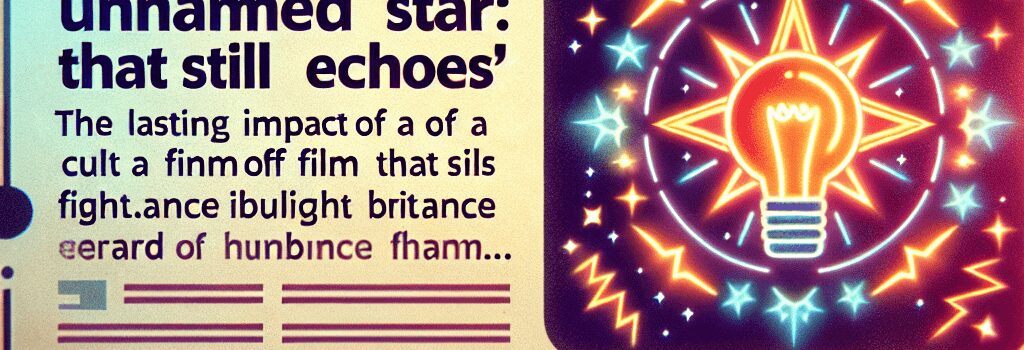RIP Val Kilmer and the Enduring Legacy of Real Genius: A Cult Classic That Resonates

Remembering a Hollywood Icon
Iconic actor Val Kilmer, celebrated for his transformative roles in films such as Top Gun, The Doors, and Batman Forever, has left us at the age of 65 after a bout with pneumonia. Kilmer’s battle with throat cancer, diagnosed in 2015, led to profound challenges—including the loss of his natural voice—and forced him to nearly retire from acting. Despite these hardships, his spirit and contributions to cinema remain indelible, inspiring peers and audiences alike. Director Michael Mann described Kilmer’s unpredictable yet brilliant range on set during his work on Heat, emphasizing how his artistic presence married vulnerability with unyielding passion.
The Cult Classic: Real Genius and Its Scientific Pizzazz
Released in 1985, Real Genius premiered soon after other 80s tech comedies like Weird Science and My Science Project, but it distinguished itself by marrying humor with methodical technical detail. The film follows Mitch Taylor, a 15-year-old high school prodigy who is recruited by the fictional Pacific Tech—a thinly veiled nod to Caltech—to work on a high-stakes laser research project. Here he meets his irreverent and brilliant roommate, Chris Knight, portrayed by a young Val Kilmer, whose rebellious charm and offbeat ingenuity encapsulate the idealism of a generation fascinated by the possibilities of technology.
Technical Analysis: The Science Behind the Cinema
One of the film’s most memorable aspects is its portrayal of laser technology—a theme that resonates with both film geeks and engineering enthusiasts. In Real Genius, characters work to construct a theoretical 5-megawatt laser, complete with clever setups such as cube beam splitters and xenon-halogen configurations. Although such power levels were not achievable in the mid-1980s, the depiction was grounded in genuine scientific principles.
Working closely with film consultant Martin A. Gunderson of the University of Southern California ensured that the movie maintained a semblance of accuracy. The inclusion of blue-green argon lasers and tunable dye lasers provided the visual veracity needed for the laboratory scenes. These devices, capable of emitting focused coherent light, underscored how even Hollywood productions could benefit from authentic scientific insight—a practice that has continued with modern collaborations between the entertainment industry and the research community.
Behind the Scenes: Engineering Marvels in Hollywood Sets
The making of Real Genius was as much a technological endeavor as it was a cinematic one. The production team went to great lengths to create sets that reflected real scientific laboratories. Custom-built equipment, including elaborate setups for the film’s famous popcorn incident, required practical solutions rarely seen in other films of the era. For instance, a series of air poppers, hydraulic lifts, and a network of conveyor belts were used to simulate the overload of laser energy—a tribute to meticulous engineering that provided authenticity to the chaos of the climax.
One particularly innovative design was the recreation of Lazlo Hollyfeld’s secret lair in the dormitory steam tunnels. Inspired by Leonardo da Vinci’s sketches, this set piece featured a multidirectional elevator made from a small car and rotating screw mechanisms—an homage not only to historical ingenuity but also to the timeless marriage of art and technology seen in Kilmer’s work.
Cultural Impact and Modern Relevance
The legacy of Real Genius extends far beyond its 80s origins. The film captured the spirit of youthful innovation and the defiance of strict academic and governmental constraints—a narrative that is increasingly resonant in today’s tech landscape characterized by rapid advancements in AI, cloud computing, and directed-energy research. Its idealistic message, emphasizing the ethical use of emerging technologies, serves as an inspirational blueprint for startups and tech innovators today.
Even in recent years, the influence of Real Genius was acknowledged by popular science shows such as Mythbusters in 2009, which attempted to recreate aspects of the film’s popcorn laser experiment. Although the scaled-up experiment proved impractical, it underscored the film’s role as a cultural touchstone—merging creative storytelling with real scientific inquiry and innovation.
Looking Forward: Legacy and Ethical Innovation
Today, as contemporary technology grapples with issues of ethical implementation and rapid innovation, the lessons from Real Genius remain acutely relevant. The film highlights how scientific breakthroughs must be contextualized within broader moral frameworks—a concept becoming ever more pertinent as new technologies permeate our society. Val Kilmer’s portrayal of a free-spirited genius resonates with modern audiences who champion the idea that creativity and ethical considerations must coexist in the fast-paced evolution of tech culture.
Final Reflections
Val Kilmer’s enduring legacy is not confined to his screen performances; it lives on in the collective memory of those who value both the art of filmmaking and the spirit of scientific inquiry. His role in Real Genius encapsulated the optimism and inventive mindset of the 1980s—a mindset that continues to inspire engineers, innovators, and creatives today. As we bid farewell to Kilmer, we also celebrate a film that challenged us to view science not merely as a technical discipline but as a beacon of hope and ingenuity.
- Val Kilmer’s multifaceted career redefined Hollywood’s approach to character and innovation.
- Real Genius set a high standard for integrating accurate scientific principles into cinematic storytelling.
- The film’s legacy inspires ethical contemplation in the adoption of groundbreaking technologies.